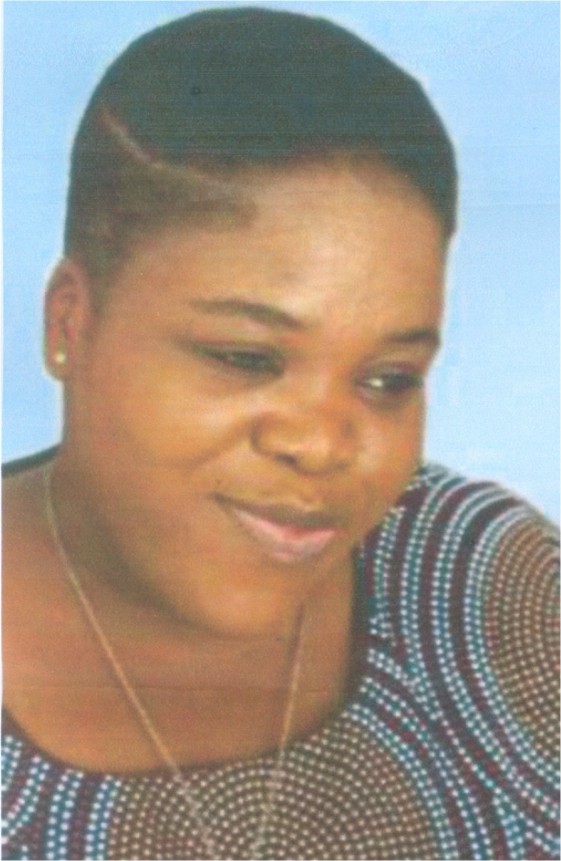•Mrs. MORENIKE SCALE Reveals The Cause Of TITILAYO OMOWONUOLA’S Death
•Sets Up Foundation Cause Of TITILAYO OMOWONUOLA’s Death
Lagos Celebrity Woman, Mrs. Morenike Scale has decided to let many people know more about the TURNER SYNDROME which killed her 27 years old daughter, TITILAYO OMOWONUOLA SCALE on 1st October, 2020. She died as a result of complications from Turner Syndrome.
She set up a foundation on 1st June 2021. It is a non-profit, non-governmental organisation, established to promulgate and mitigate a severe medical condition common in women called, The Turner Syndrome. It is also known as Ullrich Turner Syndrome. This syndrome is the most common chromosomal abnormality in females affecting one in 2,500 live female births. Turner Syndrome affects the height in adulthood. It is similar to Dwarfism, but not quite the same. A female with Turner Syndrome is usually 4ft 10 inches.
It is deadly, making life expectancy of females with Turner Syndrome to range between 20-25 years.
Have you ever met someone with extremely short stature and was swift to call him or her a dwarf? I will liken that assumption to the story of a young boy who was instructed by his mum to eat less of burger to
prevent belly bulge. One day, he met a pregnant lady at the entrance of a grocery store and quickly whispered to a friend: look at that lady, she must have been eating lots of burger’. According to a Lagos Cardiologist, Dr. Benjamin Anthony Timilehin,
Dwarfism is a genetic or medical condition when an adult has a height of four feet ten inches (4ft 10 inches) or less. However, a subset of short people with familial short stature described as short height that is considered a normal variation with bone and soft tissue development do not meet the criteria for dwarfism because there is no associated underlying medical disorder responsible for this. It is therefore
pertinent to address individuals with such height as short stature or’ little people’ rather than dwarf.
CAUSES OF SHORT STATURE
Short stature can be caused by many factors. One of the major causes of short stature is the genetic make-up of an individual. This is considered as normal or physiological. In this case, short stature runs in families especially if a chiId’s parents and grandparents are short.
Other causes of short stature include- •Genetic disorders- These are conditions which result from abnormalities in the human chromosomes or deoxyribonucleic acid (DNA). Examples include relatively common diseases like Down syndrome, Noonan’s and rare condition such as Turner syndrome. WiIIiem’s syndrome and Prader Willi syndrome.
•Chronic illness such as Cancer, kidney failure, diseases that affect the digestive system such a celiac disease, thyroid and other hormonal disorders might result in short stature.
Malnutrition is another important cause of short stature. Any disorder which impedes adequate intake of essential nutrient or reduce appetite could cause short stature. Psychosocial stressors such as famine, hostile environments, and prolonged civil unrest such as war have been studied to result in short stature.
TURNER SYNDROME (ULLRICH-TURNER SYNDROME)
An adult male and female human have the XY and XX genes respectively in their sex chromosomes. However, during growth and development in the womb (embryogenesis) one or two gene can either get missing or defective. Turner syndrome results when one of the X chromosomes is missing or partially missing. The tendency for an X gene to exhibit this abnormality is most always preponderant in an atmosphere of many X chromosomes. Thus, Turner syndrome affects only female. It is usually represented at 45XO.
Turner syndrome is the most common chromosomal abnormalities in female affecting one in two thousand five hundred live female births (1:2,500). Family history is not a risk factor for Turner syndrome.
It was first described by the anatomist Giovanni Morgagni in 1768 during a postmortem evaluation of a short woman. This was followed in 1902 by Ernst Funke, a surgeon from Lower Saxony who gave a picture of a 15-year old girl with gonadal dysgenesis, short stature, absent puberty, congenital lymphedema and a webbed neck. Ullrich in 193D described the clinical features of Turner syndrome which was confirmed by karyotyping in 1987. Be that as it may, the syndrome was named after an American Endocrinologist from Oklahoma who described seven women with characteristic phenotypic features of the syndrome and was the first to initiate estrogen replacement therapy. However, Turner syndrome is also known as Ullrich-Turner syndrome in recognition of the contributions from the two scientists.
HOW TO RECOGNISE TURNER SYNDROME- MY EXPERIENCE
In medical schools, doctors are usually taught many syndromes and diseases which many do not see in their lifetimes. However, doctors are expected to know them and describe them either during examinations
or medical consultations. One of those rare conditions is Turner syndrome.
I was opportune to flag one. I sat in my busy Cardiology Clinic on a Wednesday morning when a pleasant young but extremely short lady in her 20s walked into the consulting room accompanied by her mother and a nurse. She needed a Cardio consult because her blood pressure was markedly elevated for her age.
Upon examination, I, thought of Turner syndrome and a host of other likely causes such as thyroid or other hormonal factors. After a couple of investigations, we settled for Turner. Turner syndrome can be detected as follows-
(1) IN UTERO (IN THE WOMB OR BEFORE BIRTH)
(1) Prenatal cell-free DNA screening – a method to screen for certain chromosomal abnormalities in a developing baby using a blood sample from the mother
(2) Prenatal ultrasound. Prenatal ultrasound of a baby with Turner syndrome may show:
•Large fluid collection on the back of the neck or other abnormal fluid collections (edema), •Heart abnormalities •Abnormal kidneys.
(2) AT BIRTH OR
DURING INFANCY
These include: •Wide or weblike neck, •Low-set ears, •Broad chest with widely spaced nipples, •High, narrow roof of the mouth (palate), •Arms that turn outward at the elbows, •Fingernails and toenails that are narrow and turned upward •Swelling of the hands and feet, especially at birth, •Slightly smaller than average height at birth, •Slowed growth, •Cardiac defects, •Low hairline at the back of the head •Receding or small lower jaw, •Short fingers and toes.
(3) IN CHILDHOOD, TEENS AND ADULTHOOD
•Slowed growth •Growth spurts at expected times in childhood •Adult height significantly less than might be expected for a female member of the family •Failure to begin sexual changes expected during puberty •Sexual development that “stalls” during teenage years •Early end to menstrual cycles not due to pregnancy •Inability to conceive a child without fertility treatment
COMPLICATIONS OF TURNER SYNDROME
- High blood pressure (2) Heart related disorders such as problems with the aortae aortic dissection, a lethal condition that can lead to sudden death) (3) Kidney problems (4) Visual disturbance (5) Hearing loss. (6) Learning disabilities. Though most patients with Turner syndrome usually have normal intelligence, a small population has an increased risk of learning disabilities, particularly with learning that involves spatial concepts, math, memory and attention.


